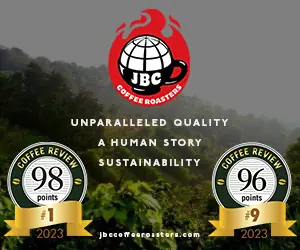Courtesy of Kenneth Davids, 21st Century Coffee: A Guide
Peru has been a particular treasure for those specialty coffee consumers who want to feel that their coffee purchase makes a difference socially and environmentally. Nowhere else in Latin America was the combination of organic and fair trade certification, both hitched to the cooperative model and supported by intelligent application of development money, quite so successful at raising coffee quality, increasing coffee production and getting a good part of the premium and pride in achievement back to small-holding, largely indigenous producers.
Unfortunately, the 2012–13 leaf-rust epidemic cruelly set back Peru’s industry. The rust infected 50% of all coffee fields and compromising the achievements of a decade or so of progress. Coupled with recent unprecedented low coffee prices and the apparent unwillingness of the coffee industry to generate higher premiums for organically grown coffee, the crisis continues to haunt Peru’s industry. One response has been, as in some Central America origins, to move from producing traditional Latin American coffees to producing coffees with unusual or differentiated cup profiles that attract higher prices.
The Back Story
Peru usually comes in as the 9th– or 10th-largest producer of coffee in the world. All of that coffee is Arabica, and almost all of it is grown by small-holding farmers (average farm size 3 hectares or about 8 acres). In 2012, nearly 90% of Peru’s coffee was produced in traditional or rustic shade. Most years Peru is the world’s top producer of organically certified coffee. Almost all Peru coffee, at least until recently, was produced from traditional, though not particularly distinctive-tasting, cultivars of Arabica grown at high elevations, a combination that contributed to making the finest Perus quietly complete, sometimes exquisitely pure coffees in the classic Latin American mode.
The Infrastructure Challenge
Peru’s main impediment to consistent coffee success, aside from low coffee prices generally and, most recently, leaf rust, is infrastructure. The over 100,000 tiny farms that produce Peru’s coffee are isolated in a formidably rugged Andes landscape, so farmers are usually on their own when it comes to the key quality steps of fruit removal and drying.
They typically use the simplest equipment — hand-cranked machines to remove the skins from the fruit and a wooden tub to loosen the sticky fruit flesh by fermentation before washing the beans in whatever water is available. Obviously, some farmers perform these operations carefully, and others do not.
It is one of the tributes to the successful intervention by various development and government agencies, plus the readiness of the indigenous producers to learn, that the best Peru coffees produced under such daunting circumstances are so often notable for their grace and sweetness.
Peru Varieties
Traditional Varieties.
The main variety of Arabica traditionally grown in Peru is one of the world’s oldest, the ancient (though usually not particularly distinctive tasting) Typica. Other cultivars are Caturra, Bourbon and Pache Comun, a compact-growing mutant of Typica.
Newly Introduced Varieties.
As in so many other origins, the very high-value Geisha variety is appearing in Peru fields. Geisha flourishes at high growing elevations, so Peru may have an edge over other origins that are attempting to get in on the Geisha game. Some producers are also planting Sidra, a variety planted in neighboring Ecuador that recent genetic fingerprinting suggests is an Ethiopia landrace. It does not appear that Peru is going to proceed in the opposite direction by supporting the introduction of rust-resistant, cup-suspect hybrids. Peruvian coffee authorities have announced an explicit commitment to a specialty-coffee strategy that appears to emphasize quality and differentiation.
The Traditional Peru Cup
Typical Global Descriptors.
At best, softly but crisply bright, balanced, gently fruit- and quietly floral-toned. Some lots, seldom those sold in specialty channels, may show clear taints acquired during processing and drying by small holders, ferment or musty notes in particular.
Common Aroma/Flavor Notes.
The best Perus express the typical range of aroma and flavor notes characteristic of fine Latin America wet-processed coffees: stone fruit, some ripe citrus, nut, delicate chocolate, flowers.
Caveat.
New coffee varieties appearing in Peru, particularly Geisha, will doubtlessly introduce considerably more complexity to the basic Peru cup, while processing variations like drying in the whole fruit will introduce still other differences.
Peru Coffee Ratings and Reviews
Click here to view ratings and reviews of coffees from Peru.










